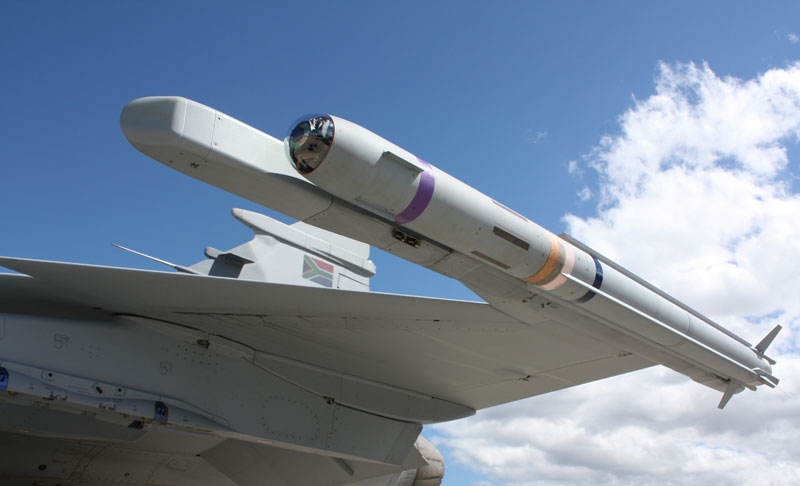27Views 17Comments

Ideas about the JF-17 Block-III’s HOBS AAM
With the addition of a helmet-mounted display and sight (HMD/S) system, active electronically-scanned array (AESA) radar, a high off-boresight (HOBS) air-to-air missile (AAM), and potentially even infrared search and track (IRST), the JF-17 Block-III is poised to be a significant upgrade for the Thunder.
Having already taken a look at the JF-17 Block-III’s HMD/S and IRST options, we will devote this article at the various HOBS AAM options potentially available to the Pakistan Air Force (PAF) for use on the JF-17. HOBS AAMs – which include 5th-generation within visual range air-to-air missiles (WVRAAM) – are highly capable munitions for close quarters air-to-air combat.
A result of over 50 years of developmental work on making air-to-air missiles resistant to modern jamming and self-protection measures, HOBS AAM technology seeks to imbue fighter aircraft with highly credible dogfighting capabilities. For example, the introduction of digital imaging infrared (IIR) seekers has enabled these AAMs to be highly resistant to current self-protection methods (involving flares).
Moreover, HOBS AAMs can also be slaved to HMD/S, enabling a pilot to cue the missile’s target using his or her eyesight. Paired with a thrust-vectoring nozzle and high-speed rocket, that is a dangerous combination, thus making dogfights a high risk proposition (notwithstanding the rise of new countermeasures to thwart these missiles).
The JF-17’s HOBS AAM options basically boil down to two strong options: The Luoyang Electro-Optical Research Institute (LEOC) PL-10 and Denel Dynamics A-Darter.
The LEOC PL-10 is China’s latest WVRAAM. Marketed as a “world class” product, the PL-10 certainly looks like a highly promising system. China’s IIR seeker technology has certainly advanced, not only is it present in the PL-10, but it is also making its way to next-generation short-range and man-portable air defence systems (MANPADS) (such as the QW-19). Although it has not yet been seen, the PL-10 will likely be paired with a new Western-inspired HMD/S system.
The Denel Dynamics A-Darter is not much different. The physical parameters are comparable, though the range has not been disclosed (unlike the PL-10 – 20km+), Denel Dynamics does claim that the A-Darter can be used “beyond IR detection range.” It is probably in the 20km+ range.
Overall, the PAF will not go wrong with either option. Granted, the LEOC PL-10 does benefit from the fact that it will have assured developmental support from China, meaning, new variants will be on the horizon. A J-10C was spotted with the PL-10 as well.
This is speculation on our part, but the A-Darter may be available on the market today; if the PAF can secure a readily available HMD/S, it could equip the JF-17 Block-I/II with HOBS AAMs right away. But it seems the capability is being staged with the JF-17 Block-III, hence the PL-10’s potentially later market availability date does not really affect the program.
As it stands, the PAF will probably go for the PL-10, especially if the HMD/S is sourced from China as well. For what it is worth, these are very high profile programs for the People’s Liberation Army Air Force (PLAAF) in that they closely tie with its next-generation fighter programs, namely the J-20. For the PAF to go with the A-Darter, the A-Darter would have to perform substantially better than the PL-10, which is unlikely, especially given the developing funding China is pushing behind its programs. The only dampener would be Chinese reluctance to release the PL-10, if not to the PAF, then for prospective export customers of the JF-17. If there is a need for the A-Darter (and Western HMD/S), it will likely be in the context of an export-centric JF-17.
There is another issue to consider as well. The acquisition of a HOBS AAM could potentially be linked to an acquisition of next-generation MANPAD and SHORAD systems. The guidance, range, electronic counter-countermeasure (ECCM) and maneuverability gains of these AAMs would make for excellent successors to Pakistan’s existing SHORAD set-up. Given how these missiles could be scaled across a wide number of use cases over the long-term, Pakistan might benefit from acquiring the core missile design alongside the necessary rights and infrastructure for local licensed manufacturing.
From the angle of transfer-of-technology and manufacturing on license, the A-Darter could stand a credible chance over the PL-10. Granted, it would be the riskier proposition for the PAF, but Denel Dynamics is not averse to such arrangements. Furthermore, unlike some of Denel Dynamics’ other programs (e.g. the Marlin), the A-Darter’s development is complete and the missile is in production. If the core technology could be scaled for SHORAD applications, especially over the long-term, the acquisition costs of the A-Darter (with local licensed production) could be distributed.
In any case, the PAF has its options in this area. This could be one of the features of the JF-17 Block-III that might be finalized earlier than the other subsystems, such as the AESA radar. In fact, HOBS AAM could be readily integrated onto the JF-17 Block-I/II, giving them a solid capability boost in relatively short-order. HMD/S is not even necessary (in terms of a short-term upgrade). For example, the A-Darter has a wide-angle scan feature, which enables it to acquire identify and lock onto targets independently. Given that the core technologies are comparable, the PL-10 should be capable of the same.


